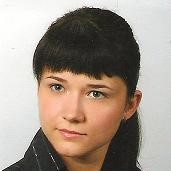Membranes in Gas and Liquid Mixture Separation and Resource Recovery
A special issue of Membranes (ISSN 2077-0375). This special issue belongs to the section "Membrane Processing and Engineering".
Deadline for manuscript submissions: closed (20 December 2021) | Viewed by 2445
Special Issue Editors
Interests: element speciation analysis; environmental protection; inorganic chemistry; metal recovery from industrial wastes; REEs; hybrid inorganic-organic membranes; membrane separation
Special Issues, Collections and Topics in MDPI journals
Interests: membrane technology; environmental protection; metal recovery from industrial wastes; REEs; trade
Special Issues, Collections and Topics in MDPI journals
Special Issue Information
Dear Colleagues,
Nowadays, membrane techniques are used not only as industrial solutions for water or wastewater treatment but also as potential technologies for the separation of gas and liquid mixtures and the valorization of residues in the circular economy. Resources such as metals, REEs (rare earth elements), salts, fertilizers, bio compounds, energy, etc., can be recovered from various wastes using membrane technologies.
The aim of this Special Issue, entitled "Membranes in Gas and Liquid Mixture Separation and Resource Recovery", is to promote membrane technologies as innovative, environmentally friendly, and inexpensive technologies for gas separation, liquid mixture separation, water treatment, wastewater treatment, and multi-resource recovery. Therefore, the scope of this Special Issue includes, but is not limited to, new approaches in membrane design and synthesis, novel membrane materials, transport phenomena/mechanisms, mathematical modeling, module, and membrane reactor design, novel applications, and industrial exploitation of membrane techniques in gas separation, desalination, water and wastewater treatment, biomedical and tissue engineering, drug delivery, recovery of any type of resources, etc. Authors are welcome to submit original research papers, communications, and review articles. We are very much looking forward to your outstanding contribution to this Special Issue.
Dr. Aleksandra Rybak
Dr. Aurelia Rybak
Guest Editors
Manuscript Submission Information
Manuscripts should be submitted online at www.mdpi.com by registering and logging in to this website. Once you are registered, click here to go to the submission form. Manuscripts can be submitted until the deadline. All submissions that pass pre-check are peer-reviewed. Accepted papers will be published continuously in the journal (as soon as accepted) and will be listed together on the special issue website. Research articles, review articles as well as short communications are invited. For planned papers, a title and short abstract (about 100 words) can be sent to the Editorial Office for announcement on this website.
Submitted manuscripts should not have been published previously, nor be under consideration for publication elsewhere (except conference proceedings papers). All manuscripts are thoroughly refereed through a single-blind peer-review process. A guide for authors and other relevant information for submission of manuscripts is available on the Instructions for Authors page. Membranes is an international peer-reviewed open access monthly journal published by MDPI.
Please visit the Instructions for Authors page before submitting a manuscript. The Article Processing Charge (APC) for publication in this open access journal is 2700 CHF (Swiss Francs). Submitted papers should be well formatted and use good English. Authors may use MDPI's English editing service prior to publication or during author revisions.
Keywords
- Membrane technology
- Gas separation
- Liquid mixture separation
- Resource recovery







